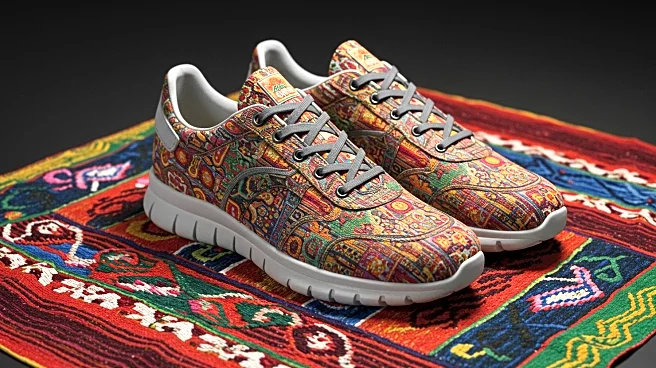Rapid Read • 8 min read
US fashion designer Willy Chavarria and Adidas Originals are facing criticism in Mexico for their latest sandal design, which authorities claim appropriates an Indigenous style unique to the region. The controversy centers around the Oaxaca Slip-Ons, which are said to reinterpret the traditional huarache sandals from the southern Mexican state of Oaxaca. Chavarria, whose father is Mexican-American, expressed regret for not developing the design in partnership with the Oaxacan community, acknowledging that the sandals did not meet the respect and collaborative approach deserved by the community of Villa Hidalgo Yalalag. Adidas has responded by expressing its appreciation for Mexico's Indigenous cultural wealth and has agreed to meet with local officials to discuss reparations.
AD
The incident highlights ongoing tensions between global fashion brands and Indigenous communities over cultural appropriation. In Mexico, handicrafts are a significant economic resource, with nearly half a million people relying on handmade products for their livelihood. The controversy underscores the importance of respecting intellectual property rights and cultural heritage, which are vital for the economic sustainability of Indigenous communities. The backlash against Adidas and Chavarria could lead to increased scrutiny of fashion brands and their practices, potentially influencing industry standards and encouraging more ethical collaborations.
Adidas has agreed to meet with Oaxaca authorities to address the controversy and discuss potential compensation for the community. This meeting could set a precedent for how fashion brands engage with Indigenous communities in the future, potentially leading to more respectful and collaborative design processes. The Mexican government, led by President Claudia Sheinbaum, has emphasized the need for compliance with heritage laws, which may result in stricter regulations and oversight of cultural appropriation in fashion.
The controversy raises broader questions about the ethical responsibilities of fashion designers and brands in preserving cultural heritage. It highlights the need for a deeper understanding and respect for Indigenous cultures, which are often marginalized in global commerce. This incident could spark a wider conversation about the role of fashion in cultural representation and the importance of authentic partnerships with Indigenous communities.
AD
More Stories You Might Enjoy











